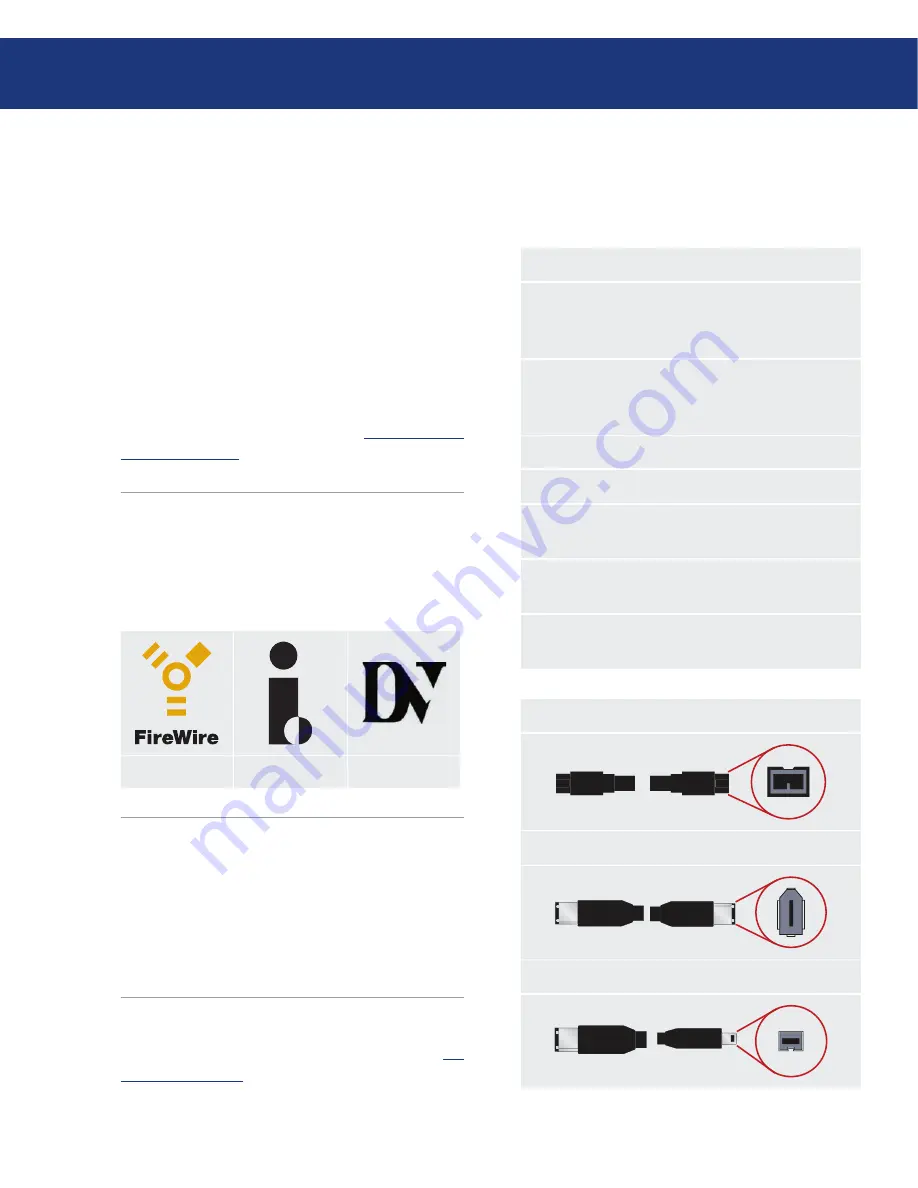
LaCie Big Disk
Triple Interface
page
FireWire 400, also known as IEEE 1394, is a high-
speed serial input/output technology for connecting
peripheral devices to a computer or to each other, and
FireWire 800 is the implementation of the new IEEE
1394b standard.
FireWire 800 offers increased bandwidth and ex-
tended distance between devices. FireWire 800 is ideal
for bandwidth-intensive applications, such as audio,
video and graphics. Please see page 33,
FireWire Ques-
tions And Answers
for more information on FireWire.
2.4. Cables and Connectors
FireWire 400 & FireWire 800
■
FireWire 800 Benefits
Resourceful architecture: FireWire 800 reduces
delays in arbitration and signal distortion, and
increases throughput.
•
Backwards compatibility: adapter cables al-
low FireWire 400 devices to operate under the
FireWire 800 port (at FireWire 400 speed).
•
FireWire 400 & FireWire 800 Benefits
Hot-pluggable: devices can be added and re-
moved while the bus is active.
•
Isochronous data delivery: no dropped frames
– FireWire supports real-time data delivery.
•
Flexible: up to 63 devices can be connected on a
single bus.
•
FireWire Icons
Theses icons will help you easily identify the FireWire
interface. They appear on FireWire cables, and next to
the FireWire port connectors on certain computers.
FireWire Cables
There are two categories of FireWire cables on the
market: FireWire 800 cables, which feature the 9-to-9-
pin, 9-to-6-pin, and 9-to-4-pin cables; and the original
FireWire cables which feature the 6-to-6-pin and 6-to-
4-pin cables.
Your LaCie Big Disk
FireWire 800 Cable and Cable End
FireWire 400 Cable and Cable End
iLink/DV Cable and Cable End (Sold separately)
For more information on the differences between
the Big Disk ’s interfaces, see chapter 4.2.
In-
terface Comparison
.
FireWire icon
iLink icon
DV icon



























